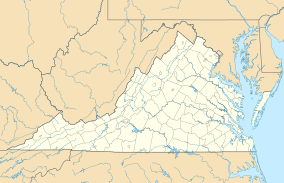False Cape State Park
| False Cape State Park | |
|---|---|
|
IUCN category V (protected landscape/seascape)
|
|
 |
|
| Location | Virginia, United States |
| Nearest city | Virginia Beach, VA |
| Coordinates | 36°35′16″N 75°53′3″W / 36.58778°N 75.88417°WCoordinates: 36°35′16″N 75°53′3″W / 36.58778°N 75.88417°W |
| Area | 4,321 acres (17.49 km2) |
| Established | 1966 |
| Governing body | Virginia Department of Conservation and Recreation |
False Cape State Park is a 4,321-acre (17.49 km2) state park located on the Currituck Banks Peninsula, a one-mile-wide (1.6 km) barrier spit between the Back Bay of the Currituck Sound and the Atlantic Ocean. It is within the city of Virginia Beach, adjacent to the state border with North Carolina, and just north of Mackay Island National Wildlife Refuge.
False Cape State Park includes hiking and biking trails, a visitors' center, extensive environmental educational programs, and facilitates primitive camping. The park can be accessed from the north on foot, bicycle, or seasonally available tram through Back Bay National Wildlife Refuge, or from the south on foot or bicycle. Boat access is possible from any shoreline. Limited vehicular access remains for grandfathered permit holders.
False Cape was so named because from the ocean it could be easily mistaken for Cape Henry, which lies about 20 miles (32 km) to the north at the mouth of the Chesapeake Bay. This false impression lured ships and boats looking for Cape Henry into the shallow waters, where they could easily run aground.
The community of Wash Woods, now abandoned, was developed by survivors of such a shipwreck in the 16th or early 17th century. The village's church and other structures were built using cypress wood that washed ashore from a wreck. In the early 20th century, False Cape was a haven for a number of hunt clubs taking advantage of the area's abundant waterfowl. The park's Wash Woods Environmental Education Center is a converted hunt clubhouse.
...
Wikipedia

